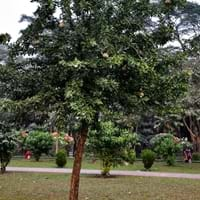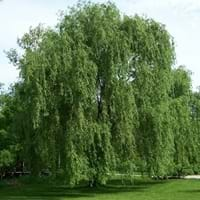Life Span
Perennial
Perennial
Origin
Bangladesh, India, Pakistan, Sri Lanka, Tropical Indomalaya
Eastern Asia, China
Types
Not Available
Babylon
Number of Varieties
Not Available
Habitat
Dry areas
Lake margins, River side, Swamps, Waste areas
USDA Hardiness Zone
Not Available
5-9
AHS Heat Zone
Not Available
10-9
Sunset Zone
Not Available
3a, 3b, 4, 5, 6, 7, 8, 9, 10, 14, 15, 16, 17, 18, 19, 20, 21, 22, 23, 24
Habit
Not Available
Weeping
Flower Color
White
Yellow green
Flower Color Modifier
Not Available
Bicolor
Fruit Color
Greyish Brown, Light Green, Not Available
Not Available
Leaf Color in Spring
Green
Green, Light Green
Leaf Color in Summer
Dark Green
Green, Light Green
Leaf Color in Fall
Green
Light Yellow, Yellow green
Leaf Color in Winter
Gray Green
Not Available
Leaf Shape
Ovate
Needle like
Plant Season
Autumn
Spring, Summer, Fall, Winter
Sunlight
Full Sun, Partial Sun
Full Sun, Partial Sun
Type of Soil
Rich
Clay, Loam, Sand
The pH of Soil
Acidic, Neutral
Neutral
Soil Drainage
Well drained
Average
Bloom Time
Late Fall
Early Spring, Spring
Tolerances
Drought
Drought, Soil Compaction, Wet Site
Where to Plant?
Ground, Pot
Ground
How to Plant?
Budding, Layering, root cutting, Seedlings
Divison, Rooted stem cutting, Stem Planting, Transplanting
Plant Maintenance
Low
Medium
Watering Requirements
Do not water excessively
Keep ground moist, Requires consistently moist soil, Requires regular watering, Requires watering in the growing season
In Summer
Lots of watering
Lots of watering
In Spring
Moderate
Moderate
In Winter
Average Water
Average Water
Soil pH
Acidic, Neutral
Neutral
Soil Type
Rich
Clay, Loam, Sand
Soil Drainage Capacity
Well drained
Average
Sun Exposure
Full Sun, Partial Sun
Full Sun, Partial Sun
Pruning
Prune after harvesting, Remove dead or diseased plant parts
Prune if you want to improve plant shape, Remove damaged leaves, Remove dead leaves
Fertilizers
for fruiting plants, use high phosphorous content fertilizer
Compost, fertilize every 2-3 weeks while growing, fertilize in growing season
Pests and Diseases
Not Available
Aphids, Beetles, Caterpillars, Red blotch
Plant Tolerance
Drought
Drought, Wet Site
Flower Petal Number
Single
Not Available
Foliage Texture
Medium
Medium
Foliage Sheen
Matte
Matte
Attracts
Not Available
Not Available
Aesthetic Uses
Not Used For Aesthetic Purpose
Beautification, Landscape Designing, Showy Purposes
Beauty Benefits
Good Cleanser
No Beauty Benefits
Environmental Uses
Not Available
Air purification, Erosion control, Food for birds, Food for insects, Nesting sites for birds, Prevent Soil Erosion, Shadow Tree, Shelter for wildlife, Versatility
Medicinal Uses
Blood cleanser, Diabetes, Ear ache, Energy, Kidney problems, Liver Protection, Malaria, Respiratory Disorders, scurvy, Snakebite
Headache, Sedative, Stomach pain
Part of Plant Used
Fruits
Tree trunks
Other Uses
Used As Food, Used for its medicinal properties
Showy Purposes, Used as firewood, Used as Ornamental plant
Used As Indoor Plant
No
No
Used As Outdoor Plant
Yes
Yes
Garden Design
Edible, Fruit Tree
Cutflower, Dried Flower/Everlasting, Feature Plant, Shade Trees
Botanical Name
Limonia acidissima
SALIX babylonica f. tortuosa
Common Name
Wood apple, monkey fruit, curd fruit
Corkscrew Willow
In Hindi
कबिट
पेंचकश विलो
In German
Indischer Holzapfel
Korkenzieher-Weide
In French
Kawista
Tire-bouchon Willow
In Spanish
Kawista
Tire-bouchon Willow
In Greek
γλυκό ασβέστη
τιρμπουσόν Willow
In Portuguese
Limonia
corkscrew salgueiro
In Polish
Feronia słoniowa
korkociąg Willow
In Latin
dulcis ad cinerem
corkscrew Willow
Phylum
Magnoliophyta
Magnoliophyta
Class
Magnoliopsida
Magnoliopsida
Order
Sapindales
Malpighiales
Family
Rutaceae
Salicaceae
Clade
Angiosperms, Eudicots
Angiosperms, Eudicots, Rosids
Subfamily
Aurantioideae
Salicoideae
Number of Species
Not Available
Importance of Wood Apple and Corkscrew Willow
Want to have the most appropriate plant for your garden? You might want to know the importance of Wood Apple and Corkscrew Willow. Basically, these two plants vary in many aspects. Compare Wood Apple and Corkscrew Willow as they differ in many characteristics such as their life, care, benefits, facts, etc. Every gardener must at least have the slightest clue about the plants he wants to plant in his garden. Compare their benefits, which differ in many ways like facts and uses. The medicinal use of Wood Apple is Blood cleanser, Diabetes, Ear ache, Energy, Kidney problems, Liver Protection, Malaria, Respiratory Disorders, scurvy and Snakebite whereas of Corkscrew Willow is Headache, Sedative and Stomach pain. Wood Apple has beauty benefits as follows: Good Cleanser while Corkscrew Willow has beauty benefits as follows: Good Cleanser.
Compare Facts of Wood Apple vs Corkscrew Willow
How to choose the best garden plant for your garden depending upon its facts? Here garden plant comparison will help you to solve this query. Compare the facts of Wood Apple vs Corkscrew Willow and know which one to choose. As garden plants have benefits and other uses, allergy is also a major drawback of plants for some people. Allergic reactions of Wood Apple are Gastric whereas of Corkscrew Willow have Asthma respectively. Having a fruit bearing plant in your garden can be a plus point of your garden. Wood Apple has no showy fruits and Corkscrew Willow has no showy fruits. Also Wood Apple is not flowering and Corkscrew Willow is not flowering . You can compare Wood Apple and Corkscrew Willow facts and facts of other plants too.





